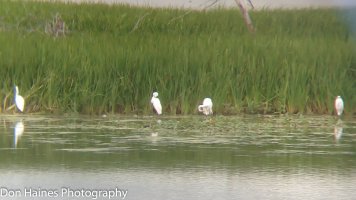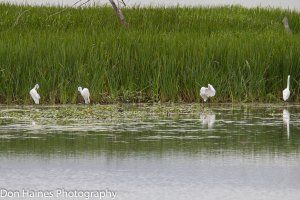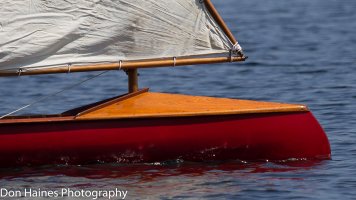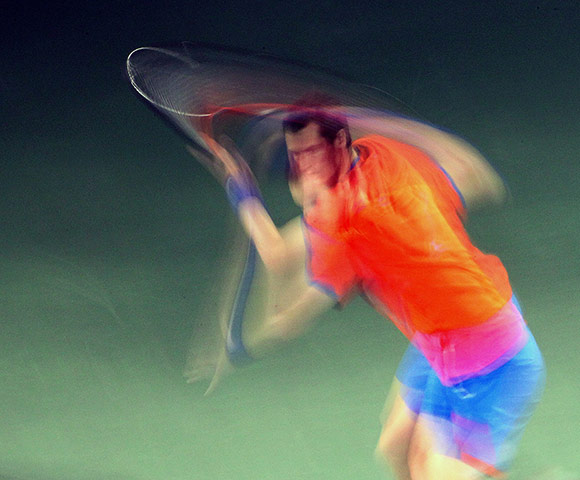As someone who has had the great fortune to make good money and acquire a fairly extensive set of pro cameras & lenses, I thought I'd offer my personal insight into the age old question/fear of whether gear matters and if so, how much. I have used and upgraded lots of gear over the last 6 years or so since getting back into (D)SLR photography, so here are my thoughts.
The following discussion assumes good or maybe even great technique. This is a
critically-important assumption as technique matters
far more than equipment. The best gear in poor hands will always yield poor results, but that's a matter for another post, so we'll just go with the assumption for now. What follows is my
personal opinion from where gear is least helpful to most helpful.
General Photography
Generally, a Rebel body with a kit lens will deliver excellent photos of most general subjects. Even in low light, the IS & STM work quite well unless the subject is moving. In good light, even sports and other difficult subjects can be captured with lenses like the 55-250 if the photographer has good instincts in terms of when to press the shutter.
Portraiture
The first step up in terms of gear helping is probably portraiture. The kit lenses are slow in terms of aperture making it harder to get that great shallow DOF style. Here, camera bodies matter very little other than to direct your lens choice, generally 50-85mm for crop, 85-135 for full frame. An aperture of f/1.2 to 2.8 is best and will give you a big step up from the kit lens. Standard EF primes work very well, though you don't need a fast lens if you shoot in a studio as you'll typically be at f/8-f/11 for most shots. What you save on cameras & lenses can easily be spent on lighting gear, but that's another topic. Just know that reflectors and diffusers used outdoors can acheive excellent results for very little money. The model/subject and your connection with them and their poses is the most important factor in getting great shots.
Landscape
The next step up is landscape photography. There are now a number of excellent wide and ultra-wide angle lenses for crop bodies, so the advantage of full frame in that regard is fading. Better bodies and equipment give you two real-world advantages - better durability and weather sealing for outdoor use, and better shadows in low light. If you don't hike to far away or rugged places or shoot before or after sunset in windy conditions where you need ISO 1600 to hold up in big prints, a Rebel body and one of the newer Canon or Sigma ultrawide zooms will serve you well. If you don't believe me, take a look at some of the winning landscape photos from major contests in the last few years. Most have been shot with crop sensors. One other thing worth mentioning are Tilt-shift lenses. While they are by no means necessary and won't revolutionize your work, they can give you unique shots and better control over DOF. They aren't easy to use, aren't weather sealed, and are all expensive manual focus primes, so these are best used once you've mastered landscape photography.
Macro
From there, I suppose macro photography is the next place where lenses and cameras make a difference. Macro shots are a bit misleading, though, as many of the zooms with short minimum focus distances work very well for close-up shots. What I'm talking about here is 0.5x (1:2) to 1x (1:1) and beyond. A true macro lens will make a huge difference here as you can get much closer, but focus tubes can work quite well with many lenses at a much lower cost. The 25mm tube and the old 24-70L took excellent photos and I used it a lot before I got a macro lens. One you start macro, you'll also realize that you're likely to need a lot of light. That means getting a macro flash, or a body that does well above ISO 1600, or both. I took lots of great photos without them, but trying to shoot a small flower in light wind at ISO800 is a serious exercise in patience. If you shoot still subjects indoors, there's no need to worry about, but for moving subjects or low light, it's important. Finally, focus rails and software like Helicon Focus can allow you to "focus stack" shots giving you much greater creative freedom, but again, it's not necessary.
Architecture
This is another specialty area where normal equipment can be used, but specialized equipment can make a big difference in your work. Full frame bodies aren't need for low light, but they allow you to use fisheye lenses and wide angles with complete freedom, but lenses like the Sigma 8-16 and third-party fisheyes can work with crop cameras. The exception are tilt shift lenses, which will give your work a professional edge. The TS-E 17 & 24 are able to straighten lines, give you better DOF and overcome issues that leveling the camera & cropping the photo simply can't overcome. If you can't afford this stuff, don't give up, though. A crop camera and a ultra-wide zoom + standard kit zoom will get you started and can generate excellent results in most situations if you take the time to learn how to use them and how to shoot architecture.
Event Photography
If you shoot weddings or other events, you will need to invest in better equipment. Fast lenses, especially f/2.8 zooms and flashes are very helpful to have. You will also need to have a back up camera, lens, and flash in case your main gear fails and to use for quick moments when you can't change lenses. More durable bodies and lenses are good to have as your gear
will take a knocking. For some events, having a high end body with a fast frame rate and high ISO capabilities is also necessary if your subjects move quickly or the lighting is poor.
Sports & Wildlife Photography
As I said in the beginning, in good light, with good reflexes (and pre-focus) even the lowliest gear can capture great sports photos in the right hands. Think about the great sports photos before autofocus and digital...
Unfortunately, if you're serious about shooting fast-moving subjects (athletes, birds, animals, etc.) a camera with a 6+ FPS frame rate is going to be very useful. If you're getting paid, I would say it's mandatory unless you have incredible reflexes and anticipation skills. That doesn't mean you'll be holding down the shutter the whole game/time, but in quick bursts to catch the peak moment and using AI Servo mode to track the subject(s).
If you want to shoot those same subjects in low light or very low light, plan on getting a high end pro body (5DIII or 1D X). The same goes for lens choices. Athletes and wildlife are very sensitive about having cameras in their face, so telephoto lenses are needed for most shots, and lenses with a f/2 to f/4 aperture will help stop motion and allow good AF in low light.
Finally, I won't cover astrophotography or many other genres where specialized gear is essential. I think that's obvious
 Summary
Summary
So in summary, the answer is - it depends. A good photographer can take good photos with any gear (see the DigitalRev series for proof), but gear does help some or a lot depending on what you shoot.




